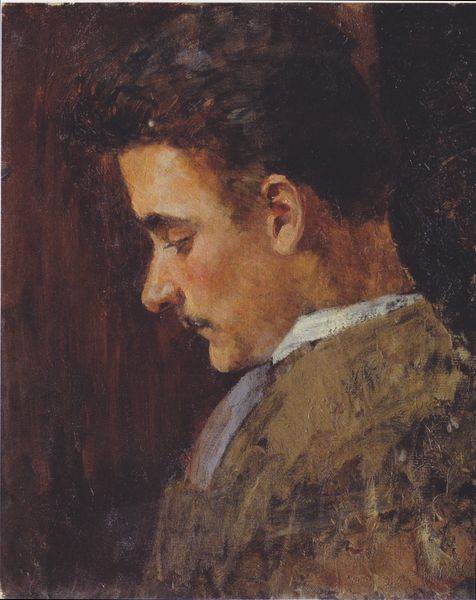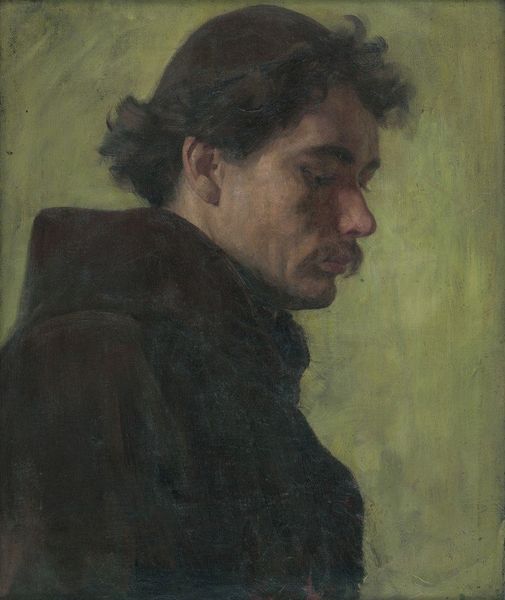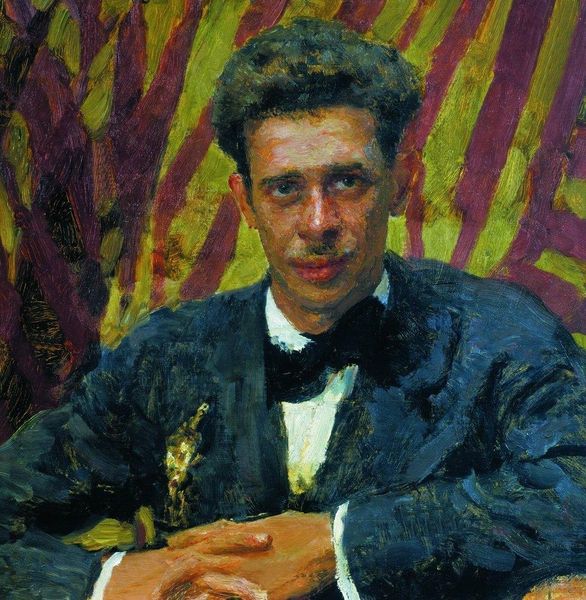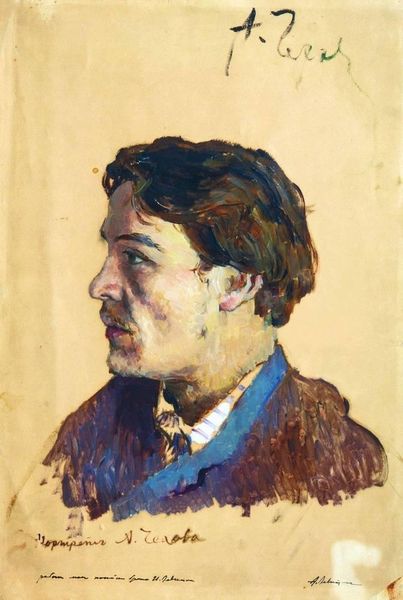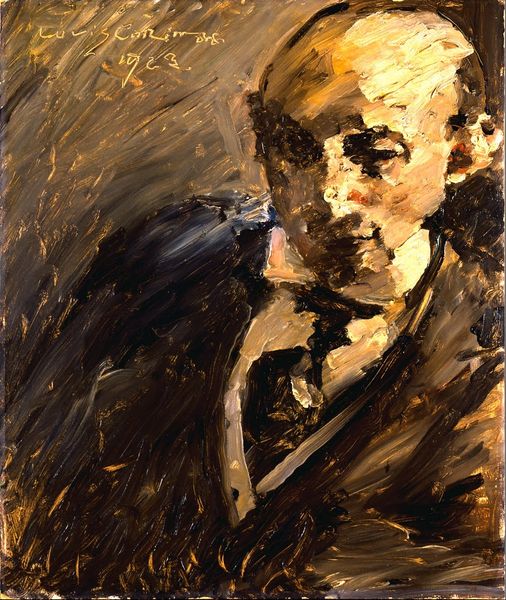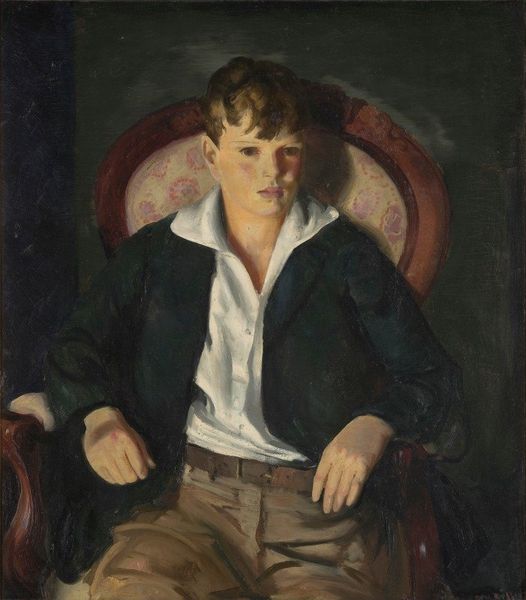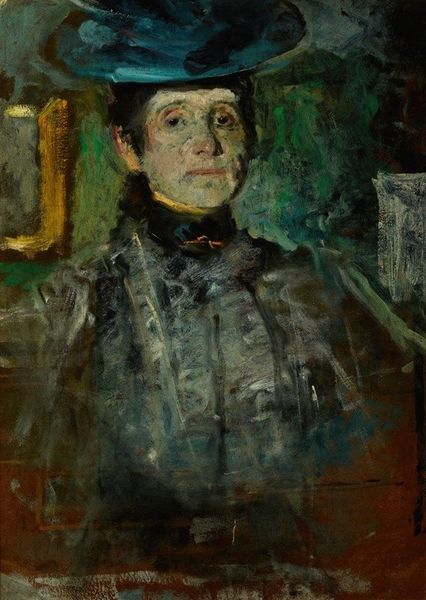
oil-paint
#
portrait
#
oil-paint
#
german-expressionism
#
charcoal drawing
#
oil painting
#
expressionism
#
portrait art
Copyright: Public domain
Editor: Here we have Lesser Ury's *Portrait of Dr. Fritz Rathenau*, an oil painting rendered with striking, bold strokes. The sitter seems to emerge from a dark and somewhat turbulent background. What resonates with you most when you view this painting? Curator: What immediately grabs me is the symbolic weight of darkness surrounding Rathenau. Look at how Ury uses chiaroscuro, that dramatic contrast of light and shadow. Does the shadow not feel ominous? In German Expressionism, shadow is rarely just shadow; it represents psychological turmoil, societal anxieties... what do *you* see lurking within it? Editor: I see a vulnerability, perhaps? The darkness does feel heavy, but Rathenau’s gaze, though shadowed, meets ours directly. Is he confronting something, or is he inviting us to see something within him? Curator: Precisely! Expressionism seeks to externalize inner emotional states, using the external world. Here, Rathenau's direct gaze could symbolize a confrontation with the changing political landscape. Given his later assassination by right-wing extremists, does Ury capture a premonition, or simply an intellectual’s unease in a time of great uncertainty? Editor: The painting gains a chilling resonance when you know about Rathenau's fate. It transforms from a simple portrait into a historical document, layered with foreboding. I didn't initially pick up on all of the layers. Curator: Indeed. And understanding these symbolic visual cues allows us to delve deeper, not only into the artwork itself but into the collective anxieties of a particular era. Visual imagery allows these narratives to linger across decades.
Comments
No comments
Be the first to comment and join the conversation on the ultimate creative platform.
